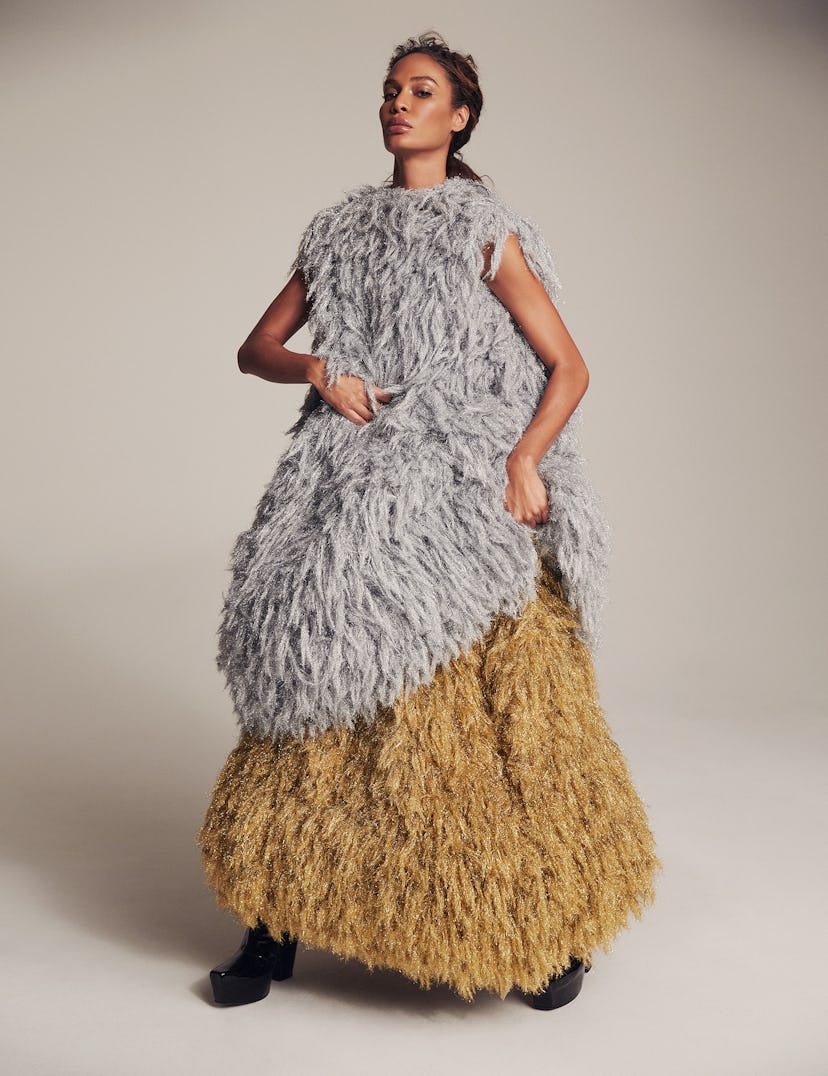Fashion May Actually Become More Equitable, Thanks in Part to Joan Smalls

Last fall, the Council of Fashion Designers in America embarked on a mission to count the seemingly endless ways in which the fashion industry is inequitable. And while they shouldn’t come as a surprise, the findings from its new survey of more than 1,000 people working in fashion are jarring. Just one statistic: Thirty-seven percent of Black employees reported having to supplement their income, vs. 23 percent of white employees.
The fact that the CFDA even conducted the survey is progress in and of itself. But the important part, of course, is what comes next. While last year’s reckoning brought the industry’s racism to the forefront, few have gone further in taking action than simply joining the Black in Fashion Council, which requires a three-year commitment to fostering representation of Black employees at all levels.
Three years is a long time. But as of this week, the Black in Fashion Council has a new option for those who want to get moving: #ChangeFashion. The campaign was created in partnership with the supermodel Joan Smalls; the mega model, talent, and events agency IMG, and the country’s largest online racial justice organization, Color of Change. The aim: to make the industry more equitable by wielding its economic and cultural power.
That mission statement may sound familiar. But #ChangeFashion has gone above and beyond to make it easy for those looking to make measurable progress—and to do so immediately. They’ve broken it all down into one big roadmap containing specific, tangible ways that the industry can wield its economic and cultural power to bring about equity.
The first order of business also sets #ChangeFashion apart; it stretches beyond the industry, to a broader divestment from the police. Recommendations include hiring independent security services for photoshoots and events and pressuring local governments to decrease spending on police and prisons. The roadmap’s other core components all focus on investment, into Black representation, portrayals, talent, careers, and communities. Again, there are specific recommendations—like adopting inclusion rider principles and disclosing information about staff diversity—and #ChangeFashion will hold adopters accountable to their choice of timeline, which ranges up to within the next year.
As for how Smalls got involved, she was one of the first in the industry to take concrete action last June. Since launching Donate My Wage, the supermodel has helped people find the best way to donate a portion of their wage to Black Lives Matter organizations. (She donated 50 percent of all the money she made in 2020.)
At 32, she has nearly a decade and a half of experience with navigating the industry, and considering how to use that experience to bring about change. “I think it’s about continuing to apply pressure,” she told WWD. “I think sometimes [brands] feel if they’re inclusive one season, it’s enough. I think it’s always important that the change comes from within the company, not just the visuals or the narrative that the rest of the world is seeing. That’s where true change comes.”